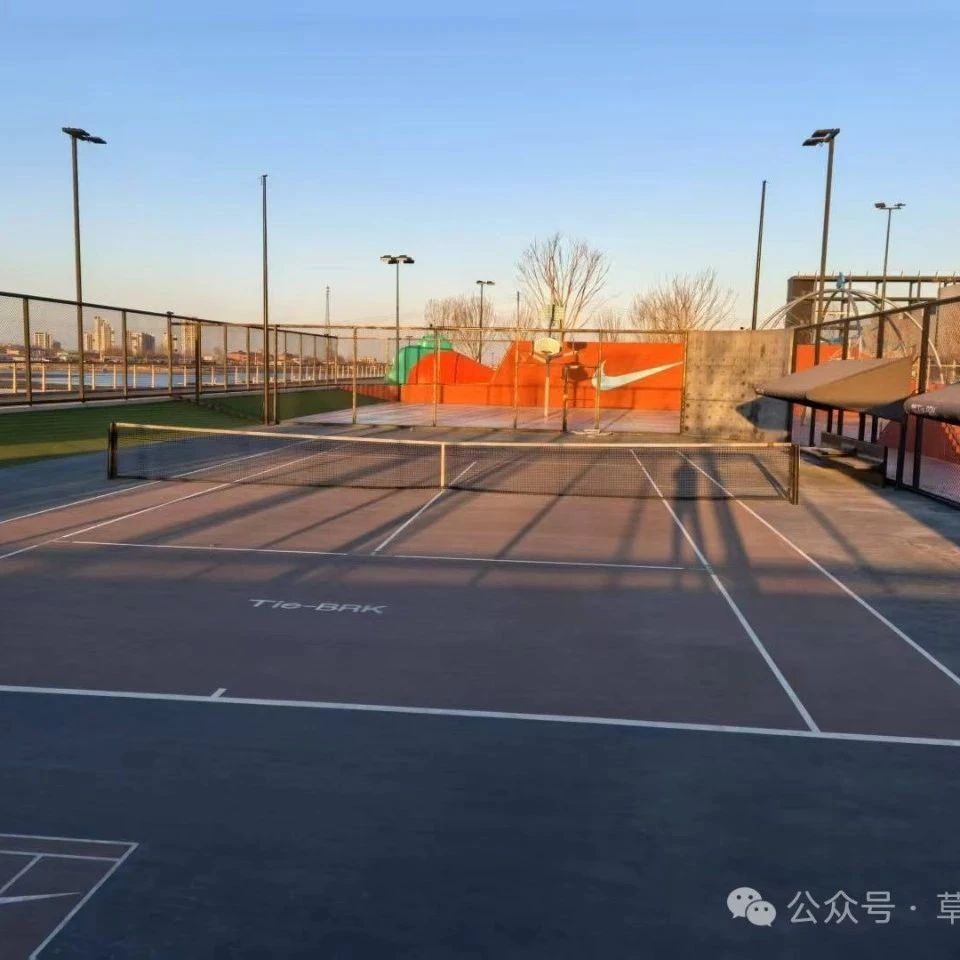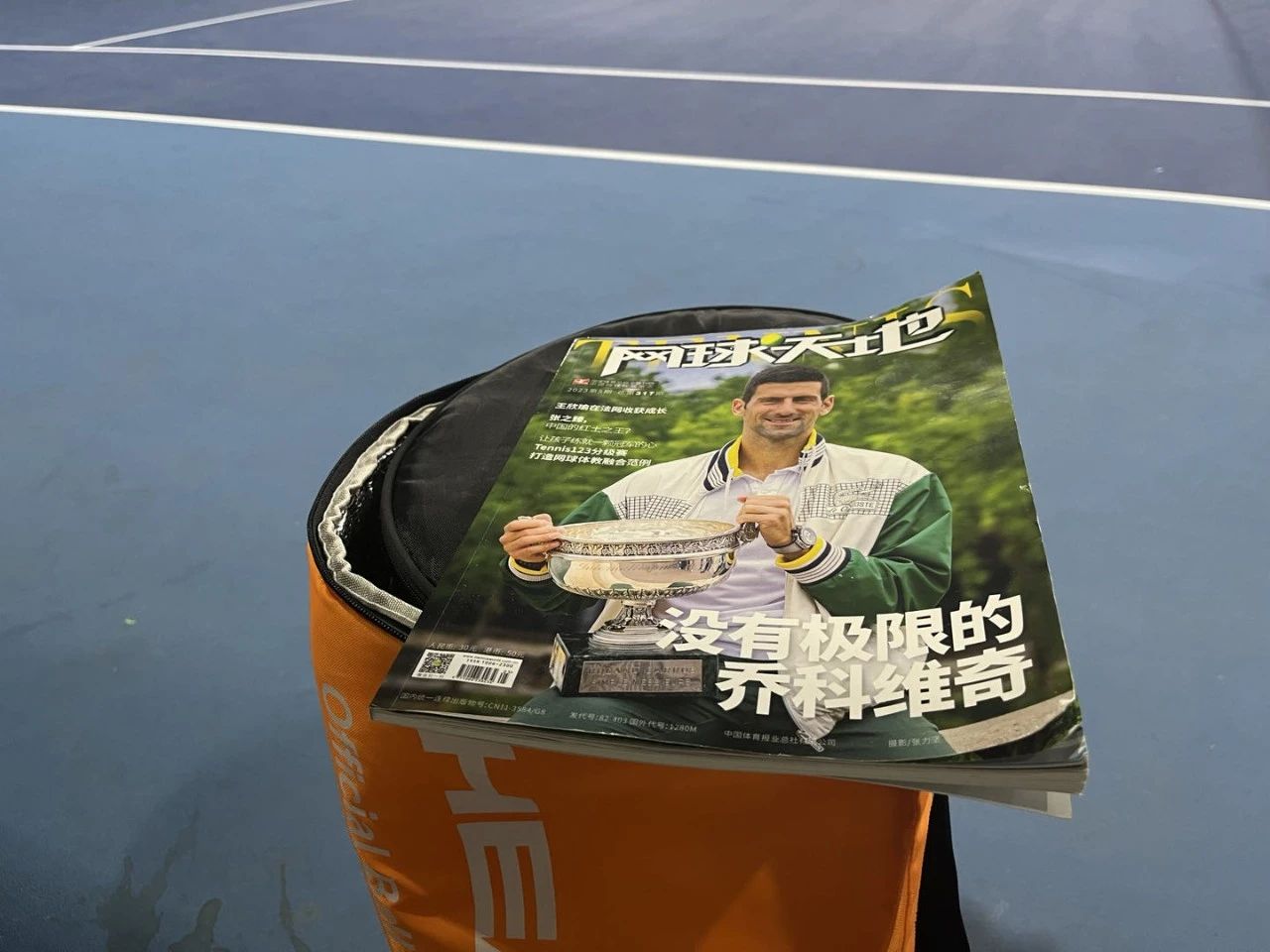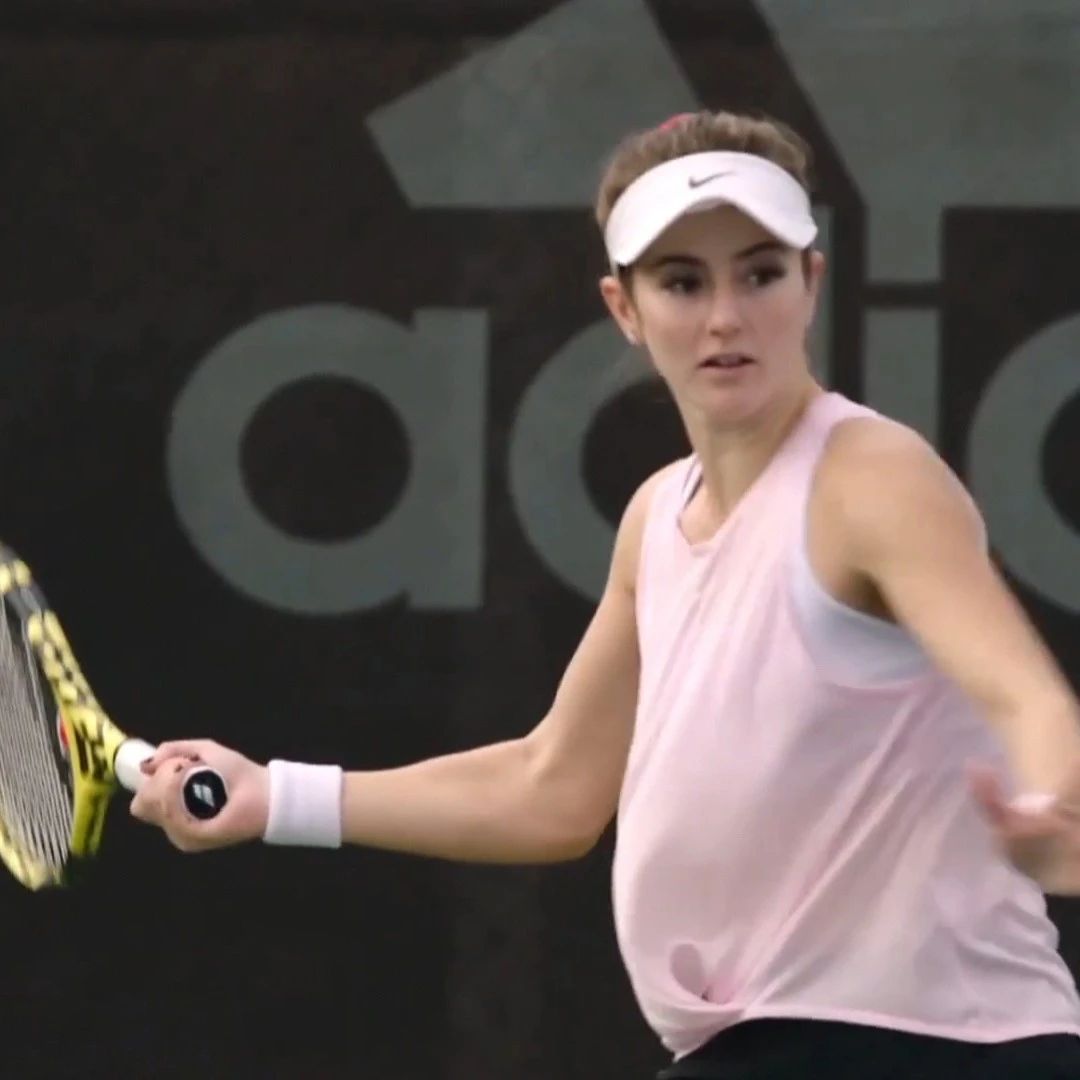The role of the three fingers at the bottom of the racket handle
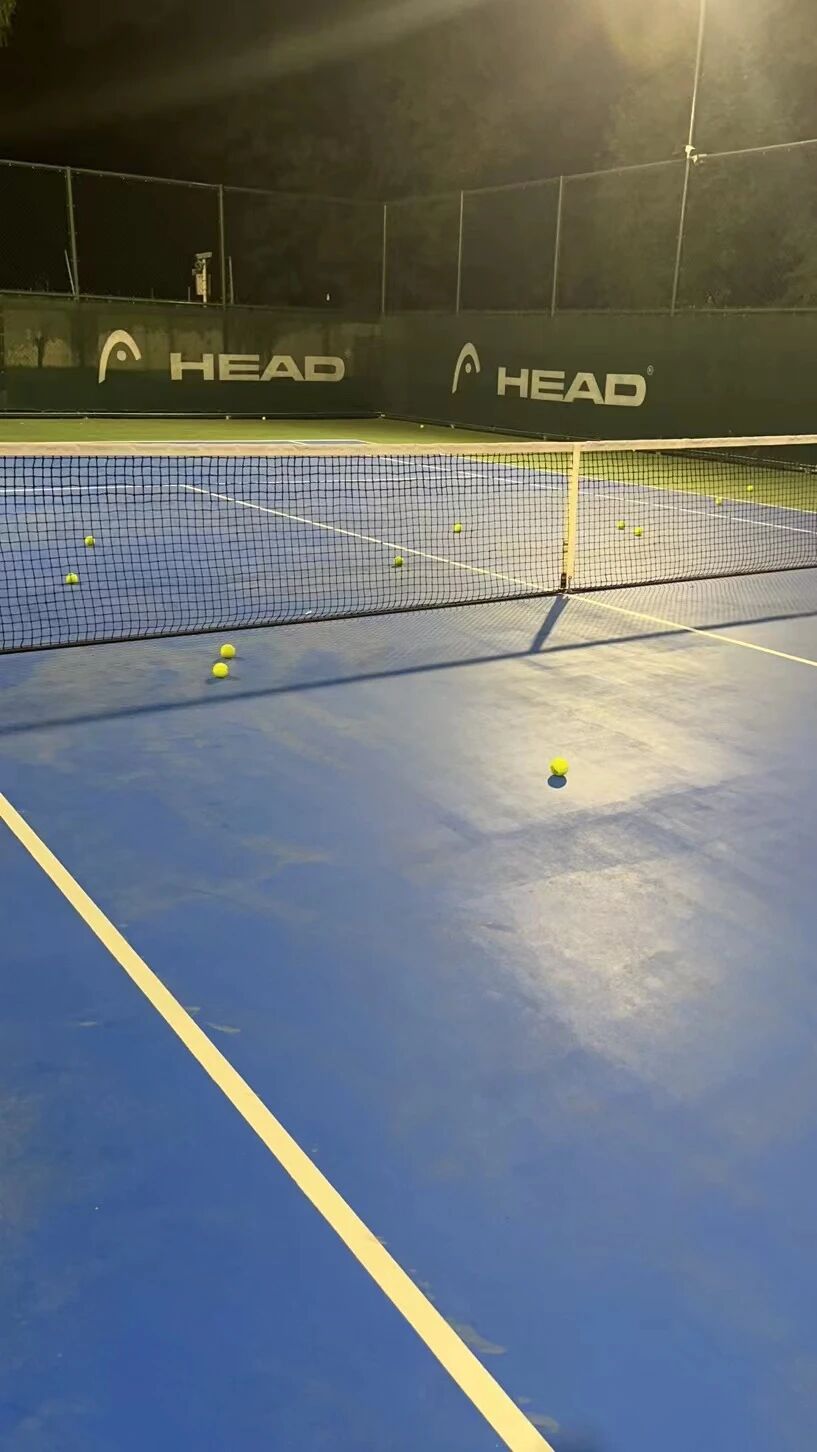
"Translated into a Forest" column articles are all sourced from foreign-language translations and are not marked as original works. For any copyright concerns, please contact us for removal.
Written in advance
Tennis techniques aren’t about simply following formulas or templates—they require players to assess the situation on the court and make informed decisions.Each muscle's strength varies both over time and in space—it can’t be explained simply by relaxing or exerting force.If you simply realize that a relaxed arm is needed for a forehand drop shot, yet stubbornly emphasize relaxation during the swing, you’ll end up just like the proverb says: "Holding a hammer, looking everywhere for nails." After all, a hammer can’t solve every mechanical problem—nor can black-and-white thinking truly address the complexities of technique. The sensible approach is to…By studying the temporal and spatial changes in the muscle dynamics of the kinetic chain, deliberately practicing with this awareness enhances neural recruitment in the body, ultimately enabling you to respond effectively through proprioception even in complex situations.The core concept of this process is sensitive awareness, consistent persistence, and proactive change.
When advancing your tennis skills, the biggest mistake is "not seeking deeper understanding." Adopting a mindset of "not seeking deeper understanding" means failing to keenly recognize even the smallest technical details. A poor attitude inevitably leads to flawed actions—and when this is combined with an inflated sense of "being right," it can cause you to drift further and further off course. Let’s strive to maintain an open, humble mindset, approaching tennis with curiosity, receptiveness, and a willingness to thoughtfully evaluate and integrate diverse perspectives on the game's intricacies. After all, one flower alone cannot bring spring; only when countless blossoms bloom together does the garden truly come alive.
In this translation, the description of "the three fingers at the bottom of the gripping hand" isn't actually a precise term—our interpretation could easily vary depending on the angle. We’d like to clarify the author’s explanation as stated in the text.“The bottom three fingers” refers to the little finger, ring finger, and middle finger.How players use these three fingers to generate power not only affects the strength of their wrist but also fundamentally shapes their hitting technique. Throughout the entire swing, players shouldn’t grip the racket either completely relaxed or overly tight—instead, they should maintain a balanced tension, alternating between moments of release and engagement, to execute a flawless shot.
Translation
Title
The Last Three Fingers of the Hitting Hand
The bottom three fingers holding the racket
Main text
The three fingers at the bottom of the racquet handle play a crucial role in hitting a good tennis shot.Throughout my coaching career, the most common question I’ve been asked by students is: "How much force should I apply when gripping the racket as a player hits the ball?"
This issue often reveals that some players tend to grip their racquets too tightly while playing. Yet, nearly all great players possess the remarkable ability to stay "relaxed yet focused"—maintaining mental concentration during matches while keeping their bodies loose and at ease. On the other hand, if a player becomes overly tense during competition, it can severely hinder their performance in every aspect. Specifically, whether analyzing their "court movement" or "shot mechanics," excessive tension proves to be utterly detrimental. Take a moment to think—has anyone ever seen Michael Jordan playing basketball with his body locked up in stiffness?
We only need to grip the racket firmly in the hitting zone—specifically, "grip the racket tightly for just a split second before and after impact." The duration of this grip is extremely brief.Many amateur players keep a tight grip on their racquets throughout the match, a habit that quickly leads to fatigue in their arms, palms, and wrists. In short, when the ball is on the opponent’s side of the court, there’s no need to hold onto the racquet so tightly—instead, we should know when to relax and when to tighten our grip.
I often use the phrase "firm yet flexible" to remind players to pay attention to their grip on the racket. However, simply saying "firm yet flexible" doesn’t help players fully grasp its meaning—or, more importantly, apply this technique effectively during their shots. In fact, "firm yet flexible" succinctly conveys how the three fingers at the base of the player’s holding hand influence the impact of the stroke.
From an anatomical perspective,Wrist strength is primarily generated by the three fingers at the base of the palm—specifically, the little finger, ring finger, and middle finger—which collectively drive the overall power of the wrist.Throughout my coaching career, I’ve taught classes to several physician trainees who specialize in wrist rehabilitation—and they’ve even used their expertise to validate this very fact.
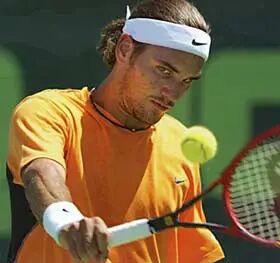
When executing a one-handed backhand, Federer primarily relies on the three fingers at the base of his hitting hand to generate grip strength.
However, what method do most amateur players use to generate grip strength? Primarily, they rely onRelying on your thumb and index finger to grip the racket, or wrapping your entire palm around it—both of these methods are incorrect.
We can illustrate the role of the bottom three fingers in grip strength through a simple exercise:
① Place the racket in your dominant hand, keeping your thumb and index finger away from the racket, while gently squeezing it with the three fingers at the bottom. At this moment, you’ll feel the racket securely locked between your palm and fingers.
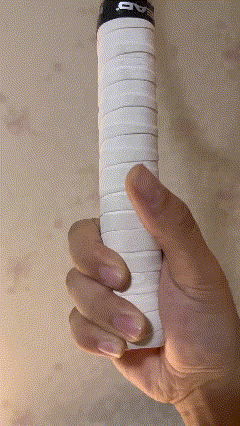
The thumb and index finger leave the racket, while the three fingers at the bottom gently grip it—creating a firm, seamless connection between the racket and the palm.
② Wrap your thumb and index finger around the handle, while keeping the three fingers at the bottom slightly off the handle. At this point, you’ll notice that your wrist feels remarkably relaxed.
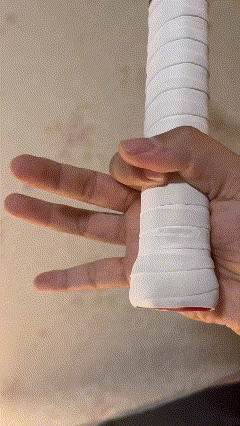
The thumb and index finger wrap around the handle, with the wrist remaining completely relaxed.
If you use the bottom three fingers of your dominant hand to generate grip strength while swinging, it can help solve many issues with your shots. Now let’s explore how this concept works across different hitting techniques.
Landing Earth Technology
By applying force with the three fingers at the bottom of the racket handle, players can immediately address several common issues:
① When facing a ball that’s traveling very fast or spinning heavily, the racket head naturally generates noticeable spin upon impact. This indicates that your grip is too loose.
② When facing a very fast incoming ball, the racquet head gets pushed backward upon impact—commonly referred to as "being unable to handle the ball."
③ Loose wrist control results in a hitting motion that merely pats the ball lightly, failing to generate any combined power. This issue also stems from gripping the racket too loosely.
④ During the swing, the ball’s trajectory becomes uncontrollable. Specifically: if a player holds the racket too loosely during impact, the ball ends up dictating the movement of the racket head—rather than the other way around. However, if the player grips the racket firmly, the racket head will take control of the ball’s motion. This precise control over the racket is at the heart of a player’s ability to master tennis.
⑤ The swing feels tense. Relaxed hitting comes from a relaxed grip during the initial phase of the swing—yet many players’ bodies tend to become overly stiff in this early part of their stroke.
TipIt is clear that, regardless of how the bottom three fingers contribute to the stroke, the two-handed backhand technique provides greater structural support compared to the one-handed backhand—physically speaking. However,Many two-handed backhand players hit the ball by gripping the racket firmly with both hands simultaneously—yet in fact, they need to learn how to properly coordinate the use of different fingers on each palm to execute the shot effectively.Whether they’re two-handed backhand players or one-handed backhanders, if their bodies remain consistently tense, the outcome is often the same—they end up with a stiff swing, fatigue in their arms, palms, and wrists, and problems like simply pushing the ball straight instead of executing a controlled, fluid stroke.
Timing: Once again, let’s clarify when to apply force with the bottom three fingers to firmly grip the racket, as mentioned earlier,Players should grip the racket "the instant before hitting the ball."If you grip the racket too early, you’ll find it difficult to adjust when facing bounces that differ from your initial anticipation. But if you wait too long to grip the racket, you’ll miss out on the benefits of firmly locking it down with the three fingers at the bottom—specifically, the "secure grip" and the enhanced "control over the ball."
Receiving and Serving Techniques
The advantage of gripping the racket firmly with the three fingers at the bottom when handling a return is almost identical to that of dealing with a lob. What makes the return-of-serve technique unique, however, is that players typically face two common challenges: first, the speed of the opponent’s serve, and second, the spin on the ball. When returning a serve, many amateur players instinctively react by clenching the entire palm around the racket, trying to counter both the speed and spin of their opponent’s shot.Hitting the ball with a tightly clenched palm often leads to increased tension in the entire arm, negatively affecting the body's kinetic chain.On the contrary, focusing intently on gripping the racket firmly with the three fingers at the bottom just "the split second before impact" not only ensures a secure connection between the racket and your palm but also allows your hand and wrist to remain relaxed enough to handle unpredictable serves—enabling you to adjust effectively when confronted with serves that vary in bounce and trajectory.
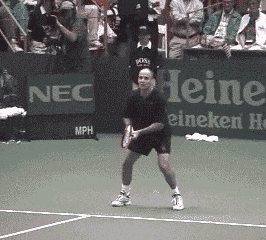
When executing a forehand return, Andre Agassi uses the bottom three fingers to firmly grip the racket, ensuring a secure connection between the racquet and his palm—while still maintaining wrist flexibility.
When receiving the serve, another challenge players face is returning the ball under pressure. Returning a serve under duress not only requires players to move quickly laterally but often forces them to stretch their bodies significantly just to reach the ball.The bottom-three-finger grip technique for receiving serves combines both firmness and flexibility.On one hand, this grip style structurally ensures a firm connection between the racket and the palm. On the other hand, when the hitting arm is fully extended, this grip still provides enough flexibility for precise ball control. If you’d like to grasp these concepts, try locking your arm, elbow, and wrist in place while extending your body—then attempt to receive the serve!
(Translator's note: In the final sentence of this paragraph, the author actually used a question mark (!?) at the end in the original text.)Translator's note on wrist lockingFor now, let's remain skeptical.This type of return practice isn’t easy for beginners—body-stretching returns are only used under extreme conditions.Under the condition of fully extending their bodies, players rely very little on the power generated by shifting their center of gravity.If the arm is fully extended and you grip the racket firmly using just the bottom three fingers, this technique generates wrist torque that propels the racket head forward, resulting in a shot speed equal to the sum of the ball’s velocity and the racket head’s speed. However, if you extend your arm and grip the racket with your entire palm instead, you’ll lose that wrist torque entirely—the racket head will move purely linearly forward, causing the ball to rebound more passively rather than being actively driven. In this case, the shot speed will depend primarily on the ball’s velocity.
Beginners don’t need to practice this advanced technique extensively—instead, they should focus on building a solid foundation."Practice the technique within 80 percent of your capacity."The concept requires exceptional physical flexibility, solid grip strength, and outstanding anticipation to execute a fully extended rally shot. However, relentlessly pursuing this type of extended reception when your physical condition isn’t up to par can negatively impact your technical development.A good approach is for players to first master the "firm yet flexible" grip using the bottom three fingers, then execute controlled drop shots effectively, gradually progressing to well-timed extended drop shots—and finally, seamlessly transitioning into extended returns of serve.)
Volleying Technique
The benefits of gripping the racket with the three fingers at the bottom are remarkably similar whether you're executing a volley, hitting a groundstroke, or returning a serve. Moreover, since volleying requires striking the ball in mid-air—before it has time to lose momentum from contact with the ground—the racket ends up absorbing significantly more force from the incoming shot compared to the other two techniques. Given this dynamic,When players use the volley technique, they need to grip the racket more firmly.This concept can help us effectively handle the following two scenarios—both of which pose significant challenges even for top-tier players.
① Return a follow-through shot (where the ball comes straight at you). In this situation, the player has no time to swing or adjust the racquet head—instead, gripping the handle with your bottom three fingers and applying force will provide instant stability and enhance your ability to control the shot.
② Two-handed backhand players often feel they lack power when forced to execute a one-handed volley. While gripping the racket with the bottom three fingers—though it doesn’t generate the same level of hitting power as a two-handed grip—this technique still contributes to overall structural stability, which in turn supports better control and effectiveness during the shot.
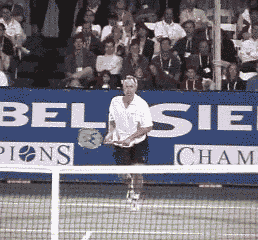
Serving technique
The key prerequisite for a good serve is that the player’s palm and wrist must remain sufficiently relaxed, as the serving motion closely mirrors the mechanics of a baseball pitcher’s throw. Therefore,In serving technique, the bottom three fingers should remain relaxed during impact to fully harness the angular momentum generated by the rotation of the palm and wrist.
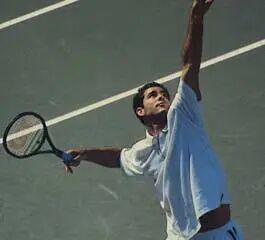
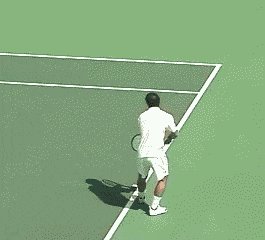
To understand this concept, we can conduct an experiment:
① Place a ball into your racket hand.
② Grip the ball as tightly as you can with all the strength you have.
③ While holding the ball firmly, throw it forward.
Through this experiment, we will discover thatTense hands can make throwing motions extremely difficult.Many amateur players grip the racket too tightly during their serve, causing a significant loss of explosive power throughout their body's kinetic chain.
One way to ensure the serving arm stays relaxed is to break down the entire serving motion into several stages.During the toss phase, use the bottom three fingers to firmly grip the racket, keeping the racket head oriented until you reach the "trophy position." Once the racket begins moving from the "trophy position," ensure that these same three bottom fingers remain relaxed—right up until the moment of impact.
Using the "trophy pose" as a turning point, we’ll compare grip techniques—can you feel the difference between serving with your bottom three fingers firmly gripping the racket versus serving with those same three fingers relaxed?
Simple exercises to strengthen the three fingers at the base
Serving technique
Practice by lifting either one finger (the pinky) or two fingers (the pinky and ring finger) from the bottom of your hitting hand while serving, just like Pete Sampras does when he serves. To perform this exercise,When holding the racket, you can place one or two fingers beneath the base cap.This racket-holding exercise will help us clearly understand the role of our fingers and wrists during the serve.
For beginners, the first step in practicing racquet-based serving is learning how to toss the tennis ball higher and farther.
Drop Shot and Serve-Reception Techniques
When practicing drop shots and receiving serves, we can maintainHold the thumb and index finger away from the racket handle.During the swing, we achieve this byAdjust the angle and pressure applied by the three fingers at the bottom to better grasp the concept of "tight yet flexible."
As you advance your skills,Ensure your entire palm remains relaxed until "the instant before impact," at which point firmly grip the racket to strike the ball—and immediately release your grip again after the shot.
(Editor's note: The precision of timing when gripping the racket is a key indicator of a player's skill level. Gripping too early can lead to a loss of explosive power and muscle endurance, while gripping too late may result in a lack of control over the ball. For beginners who struggle with accurately predicting the ball's trajectory, it’s advisable to adopt a grip-and-apply-stroke technique that slightly delays the moment of maximum force until after the forward swing—but always ensure that the gripping motion begins during the backswing phase.)"Enhance anticipation, and shorten the time to apply force and grip firmly."To achieve this, otherwise, as ball speed increases, there’s a risk of developing tennis elbow.
Volleying Technique
When we strengthen the function of the three bottom fingers during a volley, we can perform the same drills used for groundstrokes and serve returns (keeping the thumb and index finger off the handle while adjusting angles and applying pressure). This is especially helpful for players in pressured situations.A two-handed backhand player struggling with one-handed volleys can start by practicing with slower ball speeds.For a hand-held volley, once you’ve mastered the technique of generating power by gripping the racket with your bottom three fingers, start increasing the speed of the incoming ball.
Special tips for players who use a two-handed backhand
As a one-handed backhand player, I rarely find myself forced to hit a two-handed return; however, two-handed backhand players sometimes face situations where they’re compelled to go backhand with one hand. One-handed return scenarios typically include low volleys, stretched volleys, extended serves, and situations where you’re forced to hit while moving after losing your position. That’s why I always encourage two-handed backhand players to opt for the one-handed option in these challenging circumstances.I'll first teach them how to properly engage the bottom three fingers to generate power, helping them overcome their perception of insufficient one-handed hitting strength.
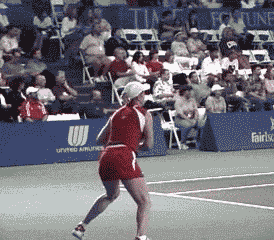
Dual-counterplayer Kim Clijsters was squeezed into a corner of the court, where she opted to use a one-handed slice shot to regain her position.
This method can also effectively help some players transition from a two-handed backhand to a one-handed backhand.
Although you should firmly grip the racket with the three fingers at the bottom when hitting a drop shot, returning serve, or executing a volley, and relax during the serving motion,These details may seem very simple, but mastering them can significantly enhance your tennis skills.
The author of this article
Dave Kensler
As of the time this article was published, he had spent 23 years coaching at Peter Burwash International, the world’s most successful tennis management company. Peter Burwash International oversees tennis programs at more than 60 prestigious resorts and clubs across 23 countries, having trained over 3 million students throughout its more than 30-year history.
The Translator's Reflections
The author elaborates in the article on whether each tennis technique requires gripping the racket firmly with the fingers at the bottom, as well as the timing for applying this firm grip. From these insights, we can see thatWhether it's a drop shot, volley technique, or serving and receiving techniques, none of them can be executed effectively by simply relaxing all the muscles in the entire arm.
However, after reading the entire article, the translator still wondered: Is it the bottom three fingers—or perhaps the bottom two—that should exert force to grip tightly?
To support his argument that hand grip strength originates from the three fingers at the base of the palm, the author chose to document the process of interviewing students who are rehabilitation doctors specializing in wrists—intending to validate his viewpoint. However, this method of reasoning is somewhat flawed.
I'm in the previous work"Getting to the Root | Grip Technique and Wrist Structure"The text provides a detailed analysis of the metacarpophalangeal joints of all five fingers. From a kinesiological perspective, the first, fourth, and fifth metacarpophalangeal joints are capable of folding movements, while the second and third joints exhibit virtually no mobility. Correspondingly, we can fold the fourth and fifth metacarpophalangeal joints by flexing the little finger and ring finger, respectively. However, it is impossible to flex the middle finger in order to fold the third metacarpophalangeal joint.
After mastering the wrist-forearm structure, the translator practiced extensively by gripping tightly with the little finger and index finger. I noticed that when using the Eastern-style forehand flat stroke, gripping firmly with the two fingers at the bottom doesn’t cause significant displacement of the index finger’s metacarpal pad before or after impact. However, when employing the semi-Western-style topspin stroke—again, with a firm grip on the same two lower fingers—the index finger’s metacarpal pad shifts dramatically both before and after contact.
Whether it's the bottom three fingers applying force or the bottom two fingers, analyze according to the principle of leverage., it must involve a "tight grip at the bottom, loose at the top" racquet-holding technique."In the course of future practice, I’ll continue exploring the meaning behind the author’s suggestion to grip the racket firmly with the bottom three fingers—perhaps the folded position of the middle finger actually maximizes the friction between the palm and the handle?!
From the perspective of the wrist joint structure, we’ll once again integrate the movements of the middle and index fingers. As for whether it’s the three bottom fingers or just the two bottom ones, we’ll discuss that after further analysis and practical exploration!
